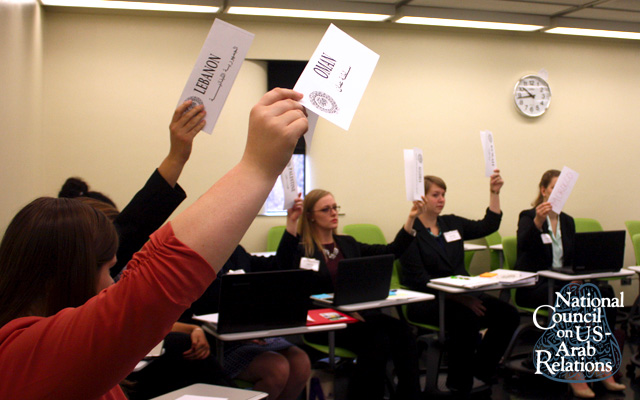By Alex Cosio-Marron
The League of Arab States’ Joint Defense Council (JDC) Chair recognizes the delegate from Lebanon, who stands and thanks the Council for its collaboration in drafting and passing Resolution I/A. The delegates had been tasked with “reviewing progress and defining benchmarks for a unified Arab force.” After hours of debate, the JDC adopts its first resolution. Resolution I/A provides clear recommendations for the formation and administration of a Joint Arab Military Force. The authors are the delegates from Tunisia, Iraq, Qatar, and Oman.
The delegates, however, are not meeting in the Arab world, but in Roanoke, Virginia. They are students participating in what is known as the Model Arab League (MAL). Similar to Model United Nations, the MALs are simulations of the League’s 22 members.
Participating in simulations enables students to anticipate the likely moves and countermoves in the metaphorical international chessboard of relations between and among allies as well as adversaries. As such, simulations are a way in which to have stimulating discussions and debates on one or more topics. They constitute an effective empirical educational experience unlike any to be found in textbooks, lectures, films, or other traditional teaching and learning materials and methods.
Students across the United States participate in 22 such simulations annually. In so doing, they hone their diplomatic, public speaking, research, writing, editing, organizational, parliamentary, resolution-drafting, coalition-building, and analytical skills.
This particular conference, the Appalachian Regional Model Arab League (ARMAL), is comprised of delegations from Hollins University, Converse College, Fairmont State University, Roanoke College, Jacksonville State University, East Tennessee State University, Roanoke Catholic High School, and William Byrd High School.
The students are responding to a March 2015 summit in Sharm el-Sheikh, Egypt, in which the (real) Arab League “called for the creation of a joint military force to counter extremism and political instability across the Middle East amid a Saudi Arabia-led operation carrying out airstrikes in Yemen.” Previous attempts to create a joint Arab military command had faltered, raising questions about the current iteration’s potential for success. Indeed, the drafting of a protocol for the joint force was recently postponed.
The debate in the ARMAL Joint Defense Council reflects the real concerns of the countries being represented. For example, in one instance the delegate from Lebanon calls for specific guidelines by which the United Arab Forces (UAF) would be called into action. In another, the delegate from Algeria questions whether providing the forces with such an extensive and unprecedented degree of power risks violating a state’s sovereign rights.
When the debate session ends and a motion for a five-minute unmoderated caucus is passed, delegates spring from their chairs to huddle and brainstorm clauses and amendments. The Chair, Carson McCallum of Converse College, smiles. “I’m really proud of everyone for working well together,” she says, adding that she’s especially pleased that the collegiate delegates are trying to involve the high school participants representing Egypt and Libya as much as possible. Although shy at first, the secondary school students are now animatedly engaging with their older colleagues.
One cluster of delegates proposes a Joint Arab Military Force Regional Assessment Test (JAMFRAT). They recommend that the endeavor be comprised of four representatives from each member state and tasked with reporting on regional threats. A second cluster begins drafting a working paper (soon to become Resolution I/B). The paper details requirements for countries interested in membership in the UAF. The paper also specifies that the UAF’s implementation of force will be based on a combination of the member states’ defense expertise and current military resources.
The unmoderated caucus ends and the delegates share their solutions with the JDC. The Chair bangs the gavel, the delegates vote in favor of the suggested changes, and the second session of ARMAL’s JDC comes to a close.
Whether the real Arab League, in a summit at its headquarters in Cairo or elsewhere among the member states, will be as successful in its own efforts to form such a force remains an open question.



